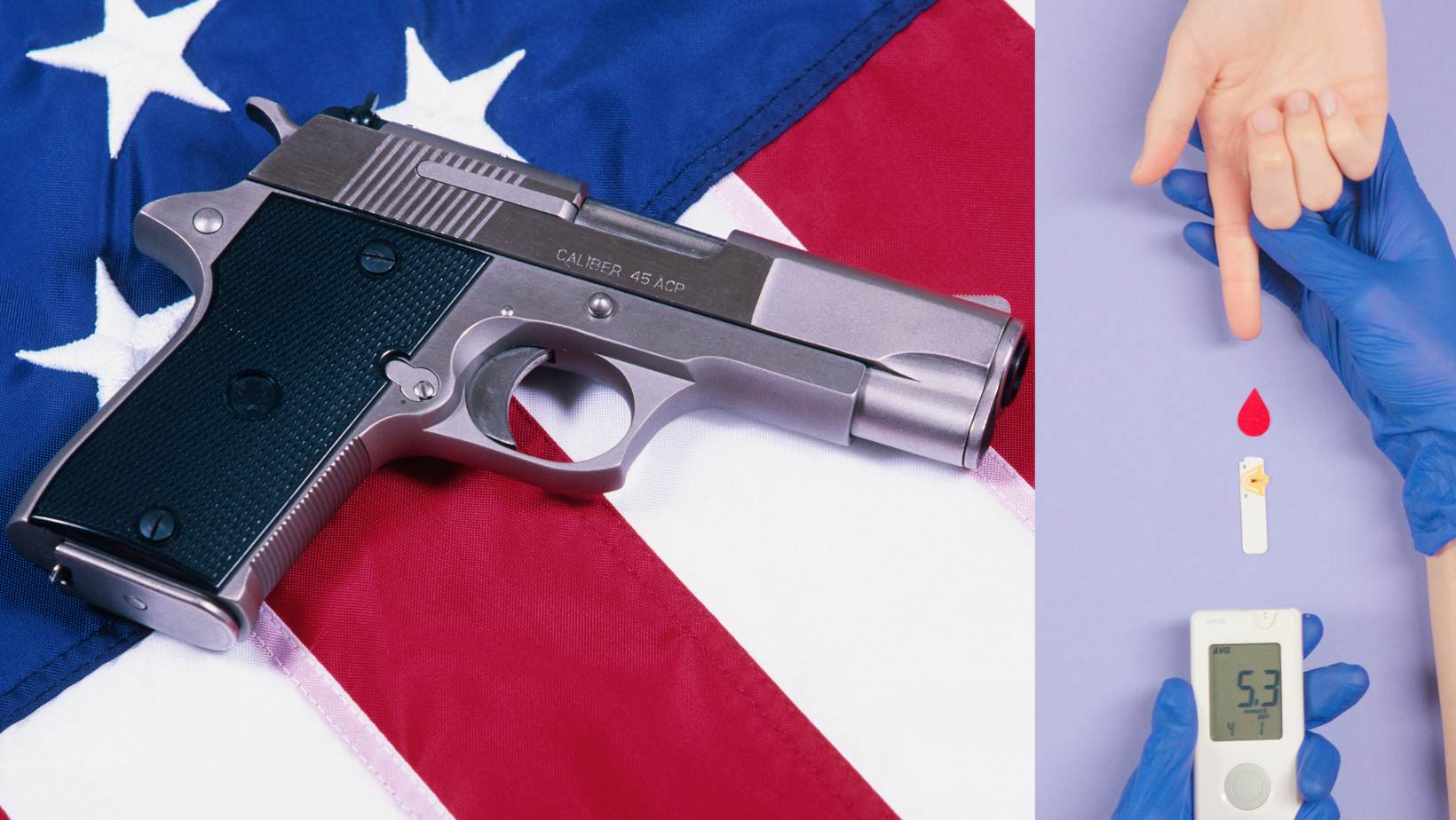As a nation, we’re often captivated by heated debates over gun ownership and regulation. But while 466 million firearms circulate among American hands, a far deadlier and more pervasive threat lurks in the shadows: diabetes. This metabolic menace now affects over 37 million Americans – nearly 1 in 9 people – and its prevalence continues to rise at an alarming rate. Let’s dive into the startling statistics and explore why diabetes deserves just as much of our national attention as the gun debate.
The Numbers Don’t Lie: Diabetes by the Stats
The latest data from the Centers for Disease Control and Prevention (CDC) paints a sobering picture:
- 37.3 million Americans (11.3% of the population) have diabetes
- 28.7 million are diagnosed, while an estimated 8.6 million remain undiagnosed
- 96 million US adults (38% of the adult population) have prediabetes
- Diabetes is the 7th leading cause of death in the United States
Compare this to the approximately 40,000 annual gun deaths in the US (including suicides), and it’s clear which is the more pressing public health crisis.
A Growing Epidemic: New Cases on the Rise
The diabetes epidemic shows no signs of slowing down. In 2019 alone:
- 1.4 million new cases of diabetes were diagnosed in adults
- 18,291 children and adolescents were newly diagnosed with type 1 diabetes
- 5,300 youth were newly diagnosed with type 2 diabetes
These numbers underscore the urgent need for increased awareness, prevention efforts, and access to care.
The Toll on Our Youth
Perhaps most concerning is the rising prevalence of diabetes among young Americans:
- 283,000 children and adolescents under 20 have diagnosed diabetes
- 244,000 of those youth have type 1 diabetes
This trend threatens the long-term health of an entire generation.
The Economic Burden: Diabetes Costs America Billions
The financial impact of diabetes on the US healthcare system and economy is staggering:
- Total estimated cost of diagnosed diabetes in 2017: $327 billion
- Direct medical costs: $237 billion
- Reduced productivity: $90 billion
To put this in perspective, the entire US firearms and ammunition manufacturing industry generates about $19.5 billion in revenue annually – a mere fraction of diabetes-related costs.
Racial and Ethnic Disparities: An Unequal Burden
Diabetes doesn’t affect all communities equally. Prevalence rates among adults vary significantly by race and ethnicity:
- 14.5% of American Indians/Alaskan Natives
- 12.1% of non-Hispanic Blacks
- 11.8% of Hispanics
- 9.5% of Asian Americans
- 7.4% of non-Hispanic whites
These disparities highlight the need for culturally-tailored prevention and treatment strategies.
The Silent Killer: Complications of Diabetes
Unlike gun violence, the effects of diabetes often go unnoticed until serious complications arise. Diabetes increases the risk of:
- Heart disease and stroke
- Kidney disease
- Blindness and other vision problems
- Nerve damage and amputations
In 2016, diabetes was listed as a cause of death on 279,776 death certificates.
Long-term Consequences
The chronic nature of diabetes means its impact is felt for decades:
- Adults with diabetes have a 50% higher risk of death from any cause than adults without diabetes
- Life expectancy is reduced by up to 10 years in people with type 2 diabetes
Prevention is Key: Tackling Prediabetes
One of the most effective ways to combat the diabetes epidemic is to focus on those with prediabetes – elevated blood sugar levels that haven’t yet reached diabetic thresholds. Consider:
- 96 million US adults have prediabetes
- More than 80% of those with prediabetes don’t know they have it
Lifestyle interventions like diet changes and increased physical activity can dramatically reduce the risk of prediabetes progressing to full-blown diabetes.
Access to Care: A Matter of Life and Death
While debates rage over gun control measures, access to diabetes care and education remains a critical issue:
- Only about 55% of adults with diabetes receive formal diabetes education
- Nearly 1 in 4 adults with diagnosed diabetes report rationing their insulin due to cost
Improving access to affordable medication, supplies, and education could save countless lives.
A Call to Action: Shifting the National Conversation
As a nation, we’re quick to mobilize resources and attention towards gun violence prevention. Yet diabetes, which affects far more Americans and claims more lives annually, often flies under the radar. It’s time to shift our national focus:
- Increase funding for diabetes research and prevention programs
- Implement policies to improve access to affordable diabetes care and education
- Launch widespread public awareness campaigns about diabetes risk factors and prevention
- Address the social determinants of health that contribute to diabetes disparities
Conclusion: A Silent Epidemic Demands Our Attention
While the debate over America’s relationship with firearms rages on, a far deadlier epidemic continues to spread quietly across the nation. Diabetes may not make headlines like mass shootings, but its impact on American lives and our healthcare system is undeniable. By redirecting even a fraction of the passion and resources we devote to the gun debate towards diabetes prevention and care, we could save millions of lives and billions of dollars. It’s time to take aim at America’s real public health crisis – before it’s too late.
